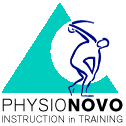Evidence is the base of medicine, but common sense is the salt of it (Slava Ryndine)
Conclusive diagnosis - effective therapy
There is a consensus in medicine, that correct diagnosis is the basis for effective treatment. Given the current results of treatments for back pain, the existing theoretical framework does not lead sufficiently to correct diagnoses. This makes a very different motor approach to the origin and treatment of back pain very plausible and at the same time consistent with science. This leads to better diagnoses and thus to exercise therapy treatments that work better.
Nerve pain (neuropatic)
When examining back pain, doctors and physiotherapists focus mainly on the spine with its intervertebral discs and the peripheral nerves exiting from the spine. This involves the hypothetical concept of nerve pain (neuropathy). Suspected nerve damage resulting from radiologically established pathology of the spine and/or functional disturbances of the peripheral and central parts of the complex system of nociception are seen as the cause of the symptoms. This is despite their hypothetical nature, the relative clinical significance of the results of the radiological examination, and the low acceptance by the academic world (of neuroanatomy). The fact that chronic (back) pain can also be explained entirely by the scientifically based nociceptive model is less and less considered a real possibility, and more often even seen as a nocebo.
Tissue pain (nociceptive)
The ligamental and subchondral tissues of the joints and the muscle fascia contain many nociceptors that are closely interconnected. Studies show that dysfunction of the hip and shoulder joints can activate these nociceptors, causing radiating pain in the arm or leg. These radiating symptoms are very similar to hypothetical nerve pain caused by peripheral nerve dysfunction.
Moreover, such dysfunctions lead to motor compensation, which will cause tissue pain in the spine.
(Slight) motor dysfunctions of shoulder joints alter the stiffness of the cervical spine and thus its load-bearing capacity during arm movements; even minor motor dysfunctions of the hip joints alter the stiffness of the pelvis and thus the load-bearing capacity of the sacroiliac and lumbosacral joints during leg movements, which is ultimately the most common cause of lower back pain. As functional disorders of the hip and shoulder increase, radiating pain in one or both parts of the joint may occur, whether combined with localized shoulder or hip pain.
Radiological vs. motor diagnostics
The cause of nerve pain (neuropathy) is determined by a radiological examination, which clearly shows spinal pathology such as stenosis and herniated discs. However, more and more researchers point out that there is no clear correlation between radiological examination results and pain. Individuals without complaints often have radiologically proven abnormalities, and individuals with complaints just as often show no abnormalities at all.
In contrast, motor examination, when performed properly, can provide accurate information about the function and condition of the musculoskeletal system (pain - mobility - strength), thus establishing clear links between symptoms (pain) and their causes.
Bio-Psycho-Social
In addition, multidisciplinary treatment protocols pay (too) much attention to psychological and social factors, which undeniably play an important role in complaints of any kind. As a result, specific, individualized physical training has become secondary to the pursued behavioral change to continue daily (sports) activities. Recent scientific research shows that the results of this approach are not optimal either.
The spine - Virtually indestructible
Although radiological images show a fragile spine, in reality, it is built extremely robustly. The stable construction of the individual segments and their mutual arrangement in combination with low mutual movement make the spine very suitable for absorbing high loads and for protecting the spinal cord and peripheral nerves. Due to the very high number of nociceptors, the admittedly robust capsular ligament apparatus remains very sensitive and thus vulnerable to improper or excessive loading, while mechanical damage is non-existent. Overloading especially of the ligamentous structures of the sacroiliac, lumbosacral and scapulothoracic joints as well as of the low-load, highly mobile cervical spine can lead to intense and prolonged pain.
However, because there is no mechanical damage in non-specific back pain, general movement is pain-reducing and function-enhancing. The specific movement that specifically relieves the painful ligamentous tissue can be significantly more effective.
Arthromyogenic inhibition - local and global motor impairment
Activation of nociceptors in the capsular-band apparatus of functionally impaired vertebral and especially hip and shoulder joints and the muscle and bone fascia involved in the joint also leads to a reduction in muscular control of the hip and shoulder muscles. These, together with the abdominal and mediocaudal scapula muscles, respectively, form a force couple. The reduced activity of these "joint" muscles is obvious since they also develop from the embryonic tissues from which the extremities are formed. The resulting dyskinesia of the scapula and pelvis leads to increased strain on a reduced loadable spine.
The chronic character of back pain is then related to the kind and severity of functional disorders of hip and shoulder joints.






